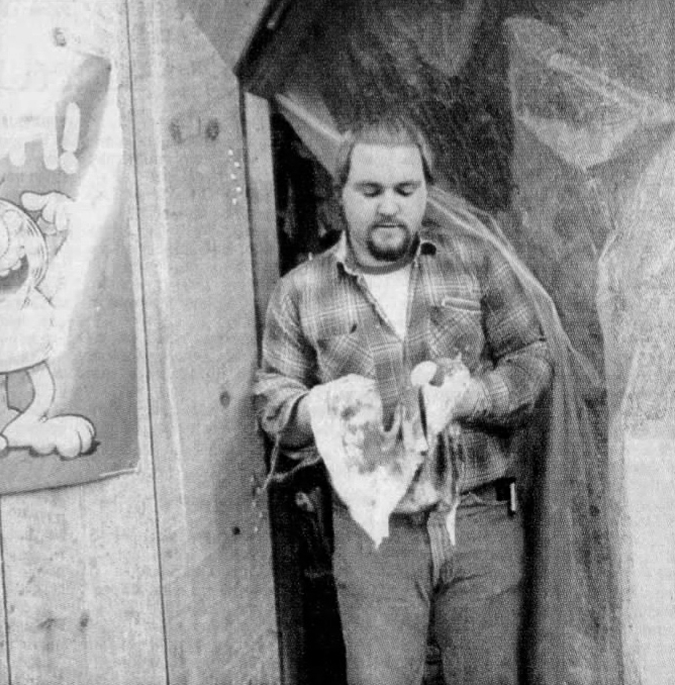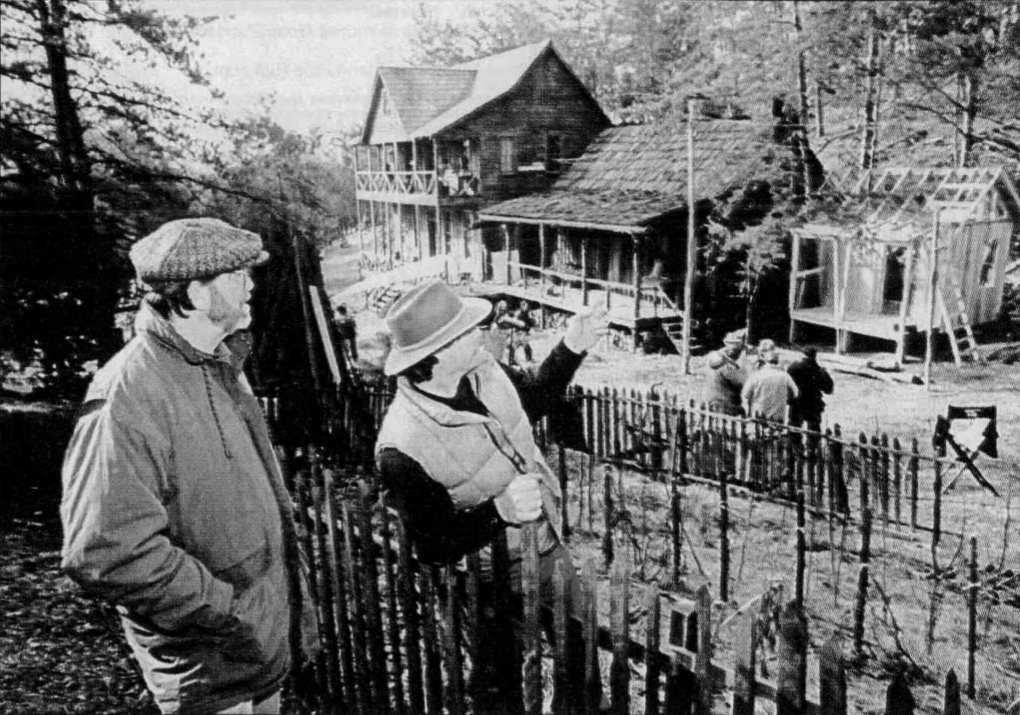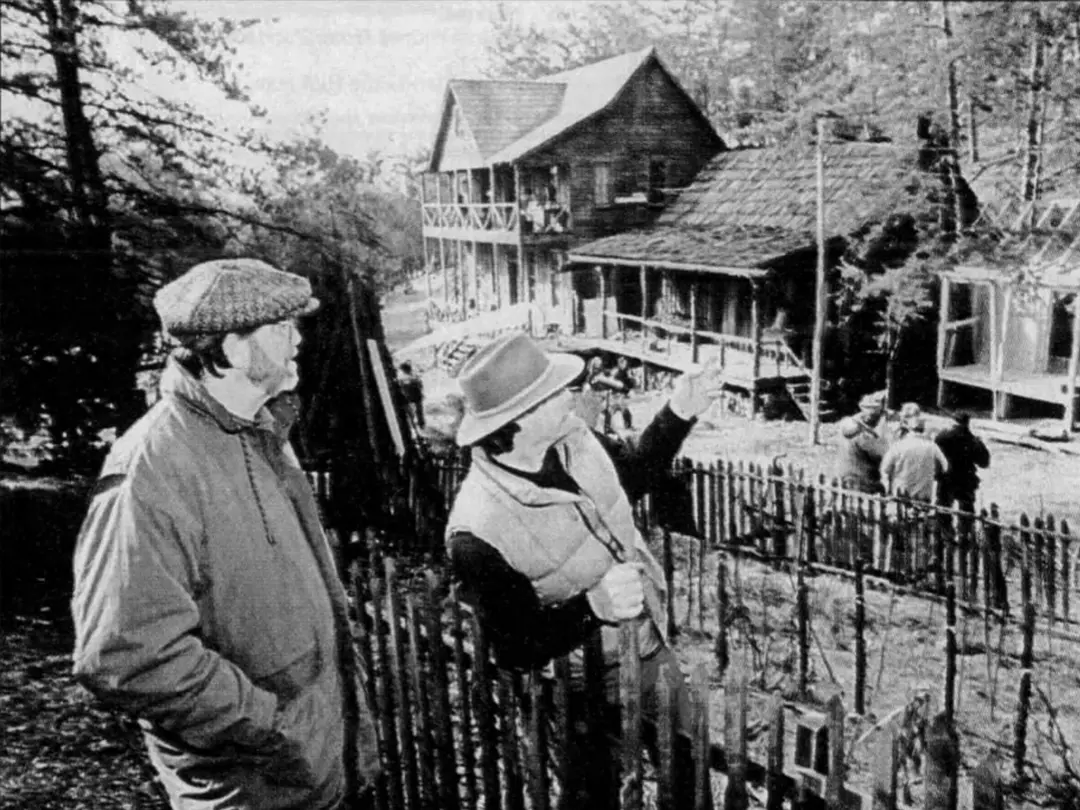by Fred Brown
Knoxville News-Sentinel
He can give a perfectly new structure that mature, wizened look. Buildings and other objects become works of old in his hand. He can make fresh lumber look termite infested and rust tin roofs overnight.
Whitney, 29, is a scenic artist. Ponytailed and bearded, Whitney was the lead scenic artist on the CBS television movie, “Christy,” which was filmed in Townsend and is scheduled to air this spring.
As part of the set crew, he and others built 22 buildings in 24 days and in the process turned new lumber into looking like it did in 1912. Whitney owns Spectrum Scenic Co., a firm based in Charlotte, N.C., that specializes in constructing and painting sets for feature-length films and made-for-television movies. Previous scenic art credits include
“Last of the Mohicans,” “The Fugitive,” “Total Recall,” and “Terminator II.” Aging is all in the chemistry, Whitney says. He uses the same stuff found in garden and drug stores – tomato dust, iron and copper sulfate, magnesium sulfate, Epsom salts and vinegar. “Common garden chemicals. That’s it. You mix it in with paint, or spray it on. Vinegar will rust metal right now,’ Whitney says.

He began his career at the age of 14 while in high school, working light riggings and sound for rock and roll bands in his hometown of Jackson, Mich. Later, he took a course in lighting at Michigan School of Arts. Whitney moved on then to work in theme parks, learning mechanics, sound and scenic design. His business, he says, is all in who you know. It runs strictly on reputation. He worked his way into television films through word-of-mouth. That evolved to a feature film and more television movies. “I did some acting, but I wasn’t interested in that. I wanted to know about the technical stuff for the set.”
Bill Creber, the movie’s production designer, whose reputation is widely known in the film industry, created the “Christy” look for the mission and the church/school where Christy lived and taught. It was Whitney’s job to take Creber’s drawings and sketches and transform them from paper to the real thing in the woods and hillsides where Creber’s “Cutter Gap” came alive for five months.
“It was Creber’s concept. I took his design and tried to satisfy what was in his mind’s eye,” says Whitney. Creber, 62, says his main job was to get the authentic look of the early 1900s. “I used photographs from the early 1900s to furnish the look for this movie,” he says. He also combed the hills of East Tennessee and North Carolina buying antique furniture for the props. Creber, working on his third collaboration with producer Ken Wales, is a three-time Academy Award nominee for his art direction on “The Greatest Story Ever Told,” “The Poseidon Adventure” and “Towering Inferno.”

The unique part of the set, Creber says, is how he and Whitney have utilized the Townsend farm on which the movie was filmed. “We came here to take advantage of the mountains and the terrain, ” says Creber, adding that the valley in Townsend was unique, remote and yet readily accessible to the production crew and cast. “It’s a very dynamic thing. It is really fun to do. We have gone from scratch to create an entire environment. Picking the colors, making the buildings look a little rundown because we didn’t want it to be too appealing. Christy had to come into an environment unknown to her.”
“It looks a little haunted. We kind of made that point.” Creber visited Del Rio, the town on which the novel was based — it is El Pano in the book — to get an idea of what we needed for the set. There was some thought given to even restoring the mission at Del Rio before deciding on Townsend as the film’s location. “We wanted to restore the mission in Del Rio. We wanted to do the archaeology and just completely restore it. But it is so inaccessible that it would have been impossible.”
“We would have had to have major road building. It’s a narrow road that was not paved for seven miles back in there. There are a couple of turns hard to get a car around. And it is not quite as photogenic as this. It is not as open. You are kind of buried in there. We were trying to keep some of that while still having the vistas. If we are buried in a pine forest, we can shoot in California. So we didn’t want that. We wanted to have Smoky Mountains in every shot if we could.”
The mountains were one element in the film that neither Whitney nor Creber had to touch up.
